Apple iPhone 16e vs iPhone 16: Which iPhone Should You Buy in 2025?
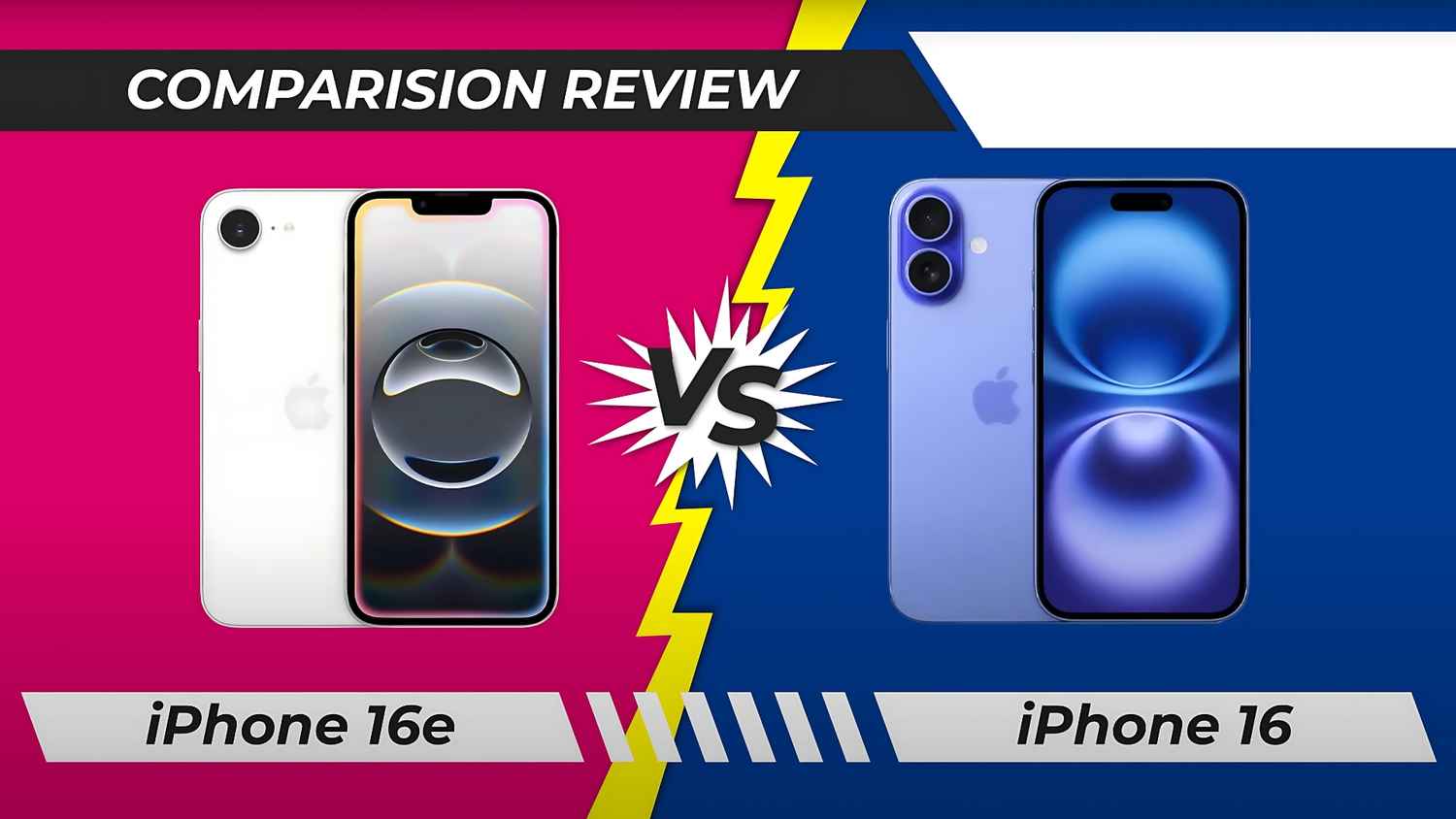
Apple has reshaped its iPhone 16 lineup, replacing the ageing iPhone SE series with the new iPhone 16e. It’s priced at Rs 59,900, which is a full Rs 20,000 less than the standard iPhone 16, making this a new entry point into Apple’s ecosystem. But the iPhone 16e raises an important question: what exactly are you getting, and perhaps more crucially, what are you giving up?
 Survey
SurveyAlso Read: iPhone 16e Is a Hit in China, Here’s Why
Display & Build Quality
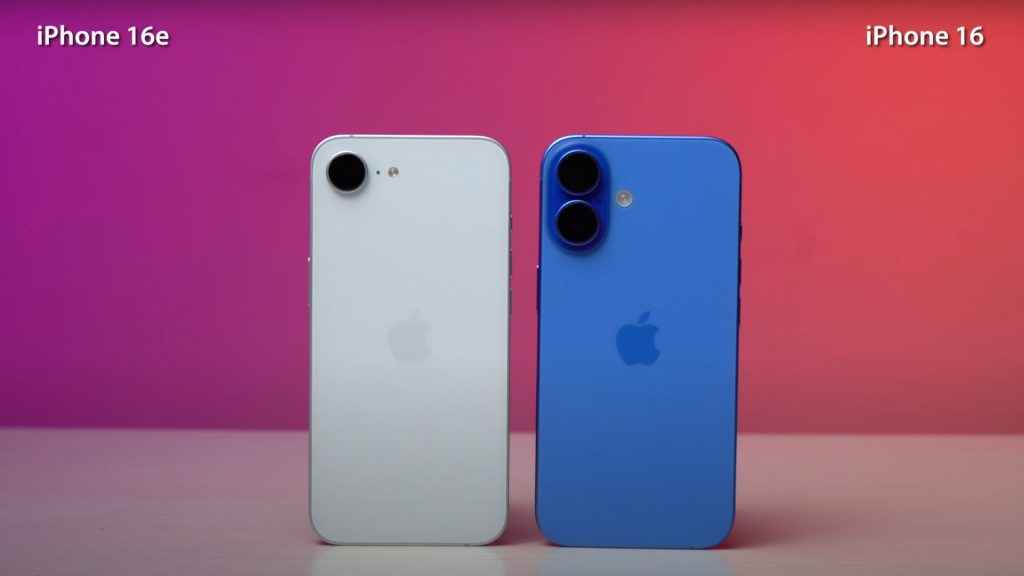
The iPhone 16e and iPhone 16 feature identically sized 6.1-inch OLED displays, marking a significant upgrade from the smaller LCD screens of the iPhone SE lineup. The 16e’s display supports Dolby Vision and HDR, as does the iPhone 16, ensuring premium viewing experiences regardless of which model you choose.
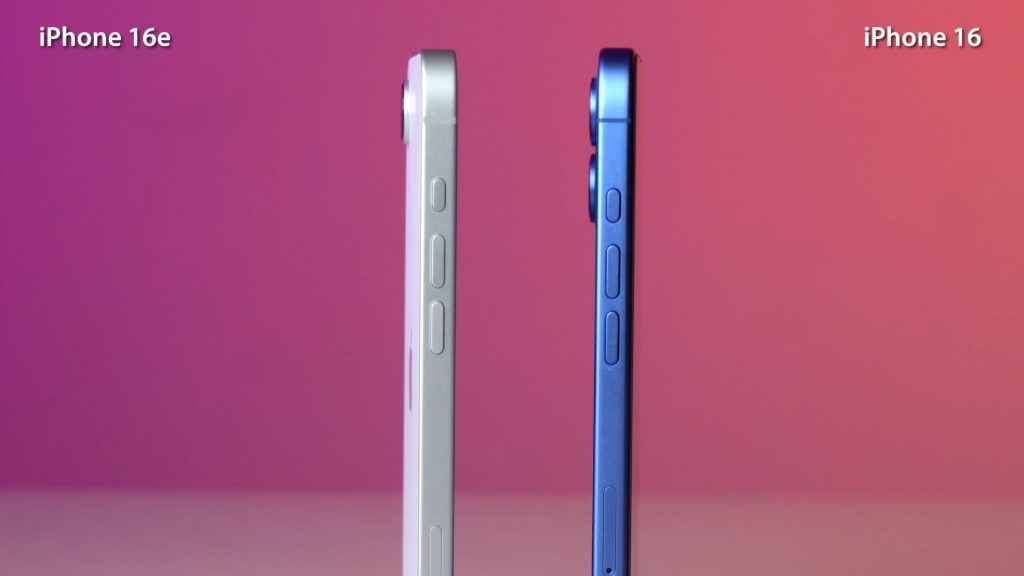
In our display tests, the 16e exceeded Apple’s brightness claims, reaching 1,525 nits compared to the advertised 1,200 nits, nearly matching the standard iPhone 16’s performance.
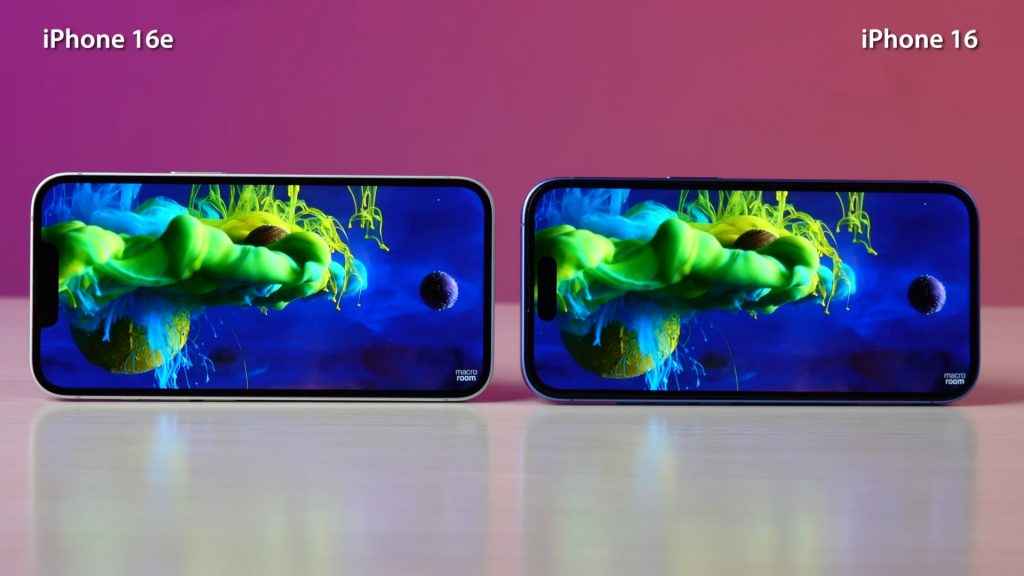
The most noticeable visual difference is the 16e retains the traditional notch design for its Face ID system, while the iPhone 16 sports the more modern Dynamic Island. This also makes the three-year-old iPhone SE the last iPhone to feature Touch ID.
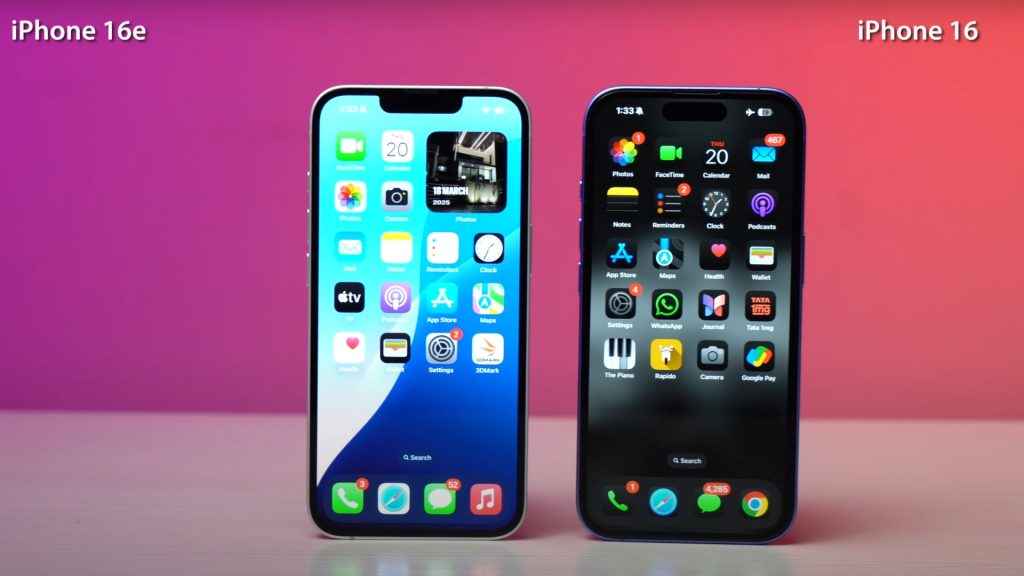
Both phones feature the new customizable Action button, replacing the classic mute slider. It enables quick access to features like the camera, flashlight, or custom shortcuts.
However, one limitation shared by both models is the 60Hz refresh rate, which I’m optimistic that the non-Pro iPhone 17 models might finally make the jump to 120Hz.
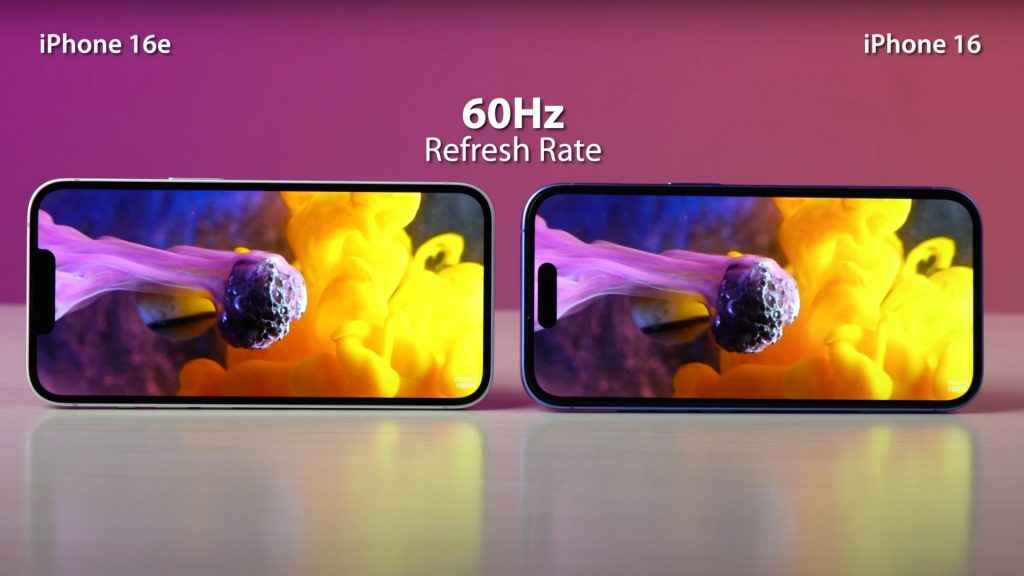
In terms of durability, both phones offer IP68 water and dust resistance (surviving up to 6 meters underwater for 30 minutes) and Ceramic Shield protection, though Apple claims the iPhone 16 features a “newer generation” of this protective glass.
The iPhone 16e offers a strictly minimalist approach with just black and white options, while the standard 16 adds Ultramarine, Teal, and Pink to those choices.
iPhone 16e vs iPhone 16 Performance
Apple has equipped the 16e with the same A18 chip found in the standard iPhone 16. The only difference is a slightly reduced GPU: 4 cores in the 16e versus 5 cores in the standard 16.
For everyday users, this difference will likely go unnoticed. Even with one less GPU core, the 16e still supports hardware-accelerated ray tracing for enhanced gaming graphics and benefits from iOS 18’s Game Mode. Both phones handle everything from messaging to social media effortlessly, with the A18 delivering approximately 80% better performance than the iPhone 11.
More importantly, both phones fully support Apple Intelligence features, including notification summaries and custom Genmoji creation.
Also Read: Apple Intelligence now available in India on iPhone, iPad and other devices
Battery Life
Apple claims the 16e actually outperforms its pricier sibling in battery endurance, offering 26 hours of video playback, 4 hours more than the standard iPhone 16 and 6 hours more than the iPhone 11.
Our real-world testing confirms this impressive performance, with the 16e consistently delivering 8-9 hours of mixed usage, including browsing, social media, video streaming, and music playback.
This advantage appears to stem from Apple’s first in-house 5G modem, the C1, which reportedly delivers better power efficiency than the Qualcomm modems used in other iPhone models.
One significant omission on the 16e is MagSafe compatibility. While the budget model supports standard wireless charging, it’s limited to 7.5W compared to the standard 16’s 15W wireless and 25W MagSafe charging capabilities.
iPhone 16e vs iPhone 16 Camera
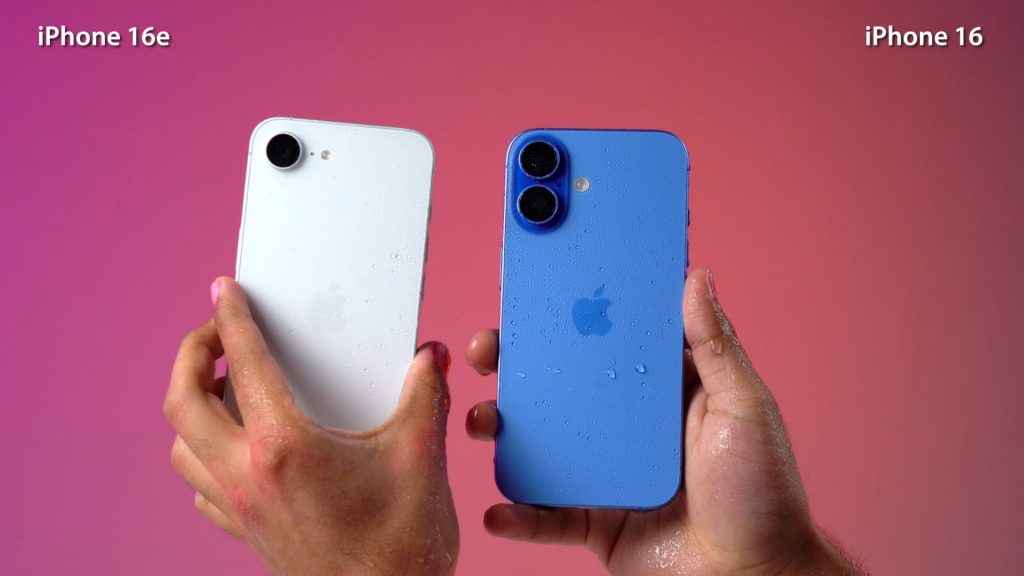
The camera system represents the most significant differentiation between the iPhone 16e and iPhone 16. While both phones feature a 48-megapixel main camera, the standard iPhone 16 adds a 12-megapixel ultra-wide lens that’s absent on the 16e. The 16e does offer a 2x zoom capability by utilizing the middle section of its main sensor.
The 16e also lacks macro photography capabilities, advanced portrait mode controls, and the new camera control button. Additionally, while the standard 16 features sensor-shift stabilization, the 16e employs standard optical image stabilization.
Despite these differences, photos from both phones appear remarkably similar in good lighting conditions, sharp, vibrant, and detailed. The 16e still benefits from Apple’s computational photography features, including Smart HDR 5 and Night mode.
For selfies, both models utilize identical 12-megapixel front cameras with autofocus. Video capabilities are similarly matched, with both phones capable of recording 4K Dolby Vision HDR at up to 60fps and supporting Spatial Audio recording and the new Audio Mix feature for post-recording sound balance adjustment.
Verdict: A Smarter Choice for Most?
At Rs 59,900 versus the iPhone 16’s Rs 79,900 starting price, the iPhone 16e represents a compelling value proposition that’s expected to become even more attractive during sales events with additional bank discounts.
For those wanting the complete iPhone experience with Dynamic Island, ultra-wide camera, and MagSafe, the standard iPhone 16 remains a clear choice.
However, for most users, the 16e offers an essential experience with identical performance, Face ID authentication, and potentially better battery life, all while saving a significant amount of money. The primary sacrifices are ultra-wide camera, Dynamic Island, and MagSafe, which are nice to have but aren’t essential to the core iPhone experience.
Apple has finally created a budget iPhone that doesn’t feel like a major compromise. While still expensive by Indian smartphone standards, the iPhone 16e represents the most compelling value proposition from Apple in years.
Read More: Made in India iPhone: How India’s saving Apple from Trump’s China tariffs
Siddharth Chauhan
Siddharth reports on gadgets, technology and you will occasionally find him testing the latest smartphones at Digit. However, his love affair with tech and futurism extends way beyond, at the intersection of technology and culture. View Full Profile